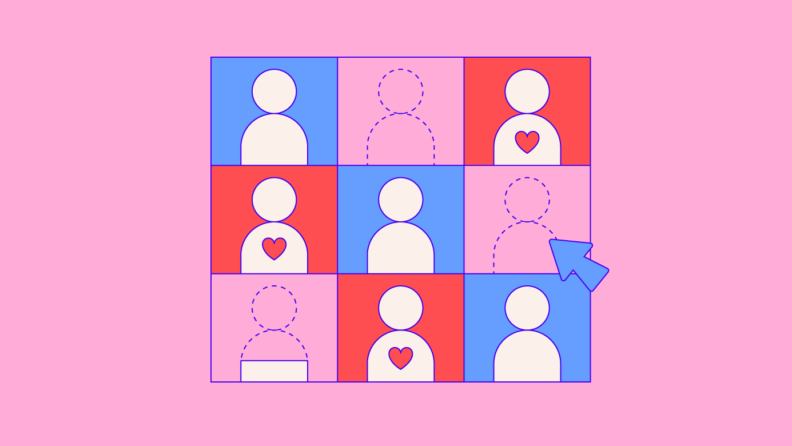Focus on winning back your most valuable customers first: They offer 70% shorter sales cycles than new acquisitions and significantly higher lifetime value. Use the RFM matrix to identify your best prospects.
Know why customers leave before trying to win them back: Track exit surveys and website analytics. Look for patterns in feedback. Common triggers? Price sensitivity, poor experiences, and better alternatives from competitors.
Deploy a strategic mix of personalized emails and retargeting ads: Automate for scale. But always keep it personal. Build trust through social proof and excellent service.
Track everything: Monitor re-engagement rates and post-win-back value. Test different approaches. Keep what works. Your data will light the way forward.
Crack open a jar of coconut oil in summer, and it flows like liquid silk. But come winter, that same oil turns rock-solid—frozen.
The solution isn't to force it—it's to place the jar in warm water and watch as the solid slowly yields, transforming back into its flowing self.
Your inactive customers are quite similar.
They may have gone cold, turning their backs on your business, but with the right warmth—thoughtful, patient, and strategic—you can melt those barriers and rebuild the relationship.
Let's bring that warmth back to frozen customer connections—let's win back your lost customers.
The Value Of Winning Back Lost Customers
There's nothing like landing a new customer. The rush of fresh energy and potential is undeniable.
The real gold, however, is often hidden closer to home—in your existing customer base. Even those who've drifted away.
Re-engaging those lost customers—sometimes called "customer reactivation" or "win-back," offers tons of benefits, including increased profitability.
It's not just about warm fuzzy feelings; it makes serious financial sense.
Why Bother With Lapsed Customers?
A lost customer is simply someone who has stopped buying your products or services. But they can be brought into the fold again—to your benefit.
This is backed by cold, hard data.
- High ROI: In the Customer Winback Benchmark Study 2023 by Winback Labs, the ROI for win-back campaigns outperforms most marketing strategies.
- Shorter sales cycles: The average sales cycle was 70.4% shorter for past customers than for new prospects, according to the study. This means that they closed about three win-back customers for every new customer they won.
- Increased customer lifetime value (CLTV): Winning back a customer can lead to increased CLTV. These "boomerang customers" often return with a renewed appreciation for your brand and may become even more loyal than before. They're more likely to make repeat purchases, spend more per transaction, and even become enthusiastic brand advocates.
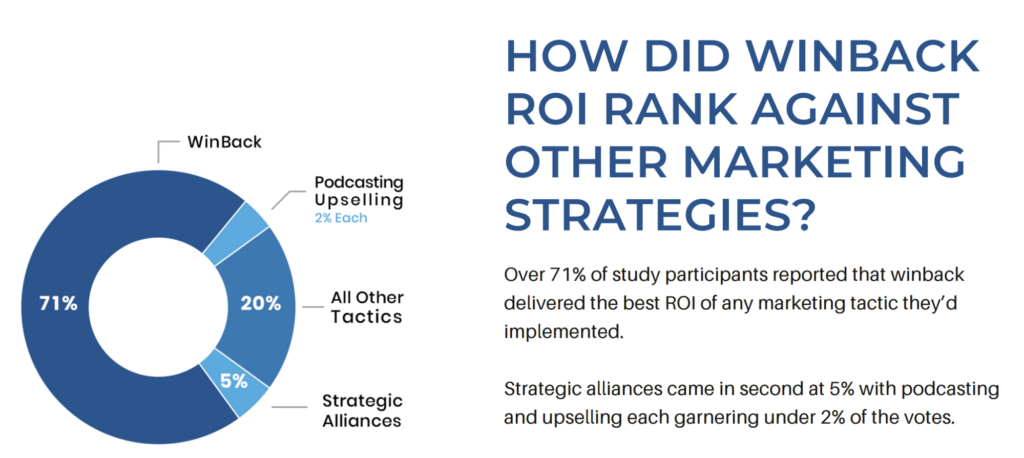
Why Customers Leave: Common Reasons for Customer Churn
Customer churn is the business equivalent of watching your carefully nurtured houseplants wither and die.
But what causes those churn rates to creep up in the first place?
- The “Greener Grass” effect: If your competitors are offering better value, features, or pricing, it's easy for customers to jump ship.
- The "Sticker Shock" phenomenon: Price matters. One of the leading customer churn reasons is if customers feel your prices are too high or if a sudden price hike doesn't come with obvious added value. They might then start looking for cheaper alternatives.
- Product or service quality issues: If your product is riddled with bugs, suffers frequent downtime, or has outdated features, customers will quickly lose patience. Add to this, if you have subpar customer service, that’s a double whammy for churn.
- Poor customer experience: Whether it's unmet expectations, a clunky interface, or a product that fails to deliver, a lackluster experience sends customers running for the hills (or at least to your competitors).
- Lack of meaningful engagement: Everyone wants to feel seen and appreciated, even your customers. If they feel neglected or undervalued, they're more likely to stray.
Understanding Your Inactive Customers
Don't just track that they left, track how they left, and why.
Go beyond simple churn rate metrics and dig into the "how" and "why" of customer departures.
Customers leave for various reasons, but it all boils down to needing more value from you and better alternative solutions.
You can dig into churn rates using feedback surveys, product usage metrics, and more—every customer-facing touchpoint offers answers to help you understand more about the good, bad, and ugly of your customer experience
1. Analyze Website and App Behavior
Analyze website analytics to see where users are dropping off. Track user flow through your site. Are people abandoning their carts at a specific step?
If you have an app, track user behavior—which features are gathering dust? Where are users getting stuck? For example, monitor in-app errors and crashes. These can be major sources of frustration and lead to churn.
2. Segment, Segment, Segment
Group lost customers by their reason for leaving, the value they bring to your business, and their engagement level with your brand.
If customers leave because of price, consider personalized offers or a special discount on their next purchase.
If your retention rates are taking a hit because of product dissatisfaction, gather specific feedback and use it to improve your offerings.
Here are some methods to gather important customer data:
- Exit surveys: When a customer cancels their subscription or account, ask them why they're leaving. Offer a small incentive (like a discount on their next purchase) to encourage participation.
- Customer feedback: Analyze customer reviews, support tickets, and social media comments to identify recurring complaints or suggestions.
- Website and app analytics: Track user behavior on your website and app to identify pain points or areas of friction in the customer journey.
- Social media monitoring: Track mentions of your brand and analyze sentiment. Are people complaining? Praising you?
See how Netflix keeps it relevant, simple, and recent:
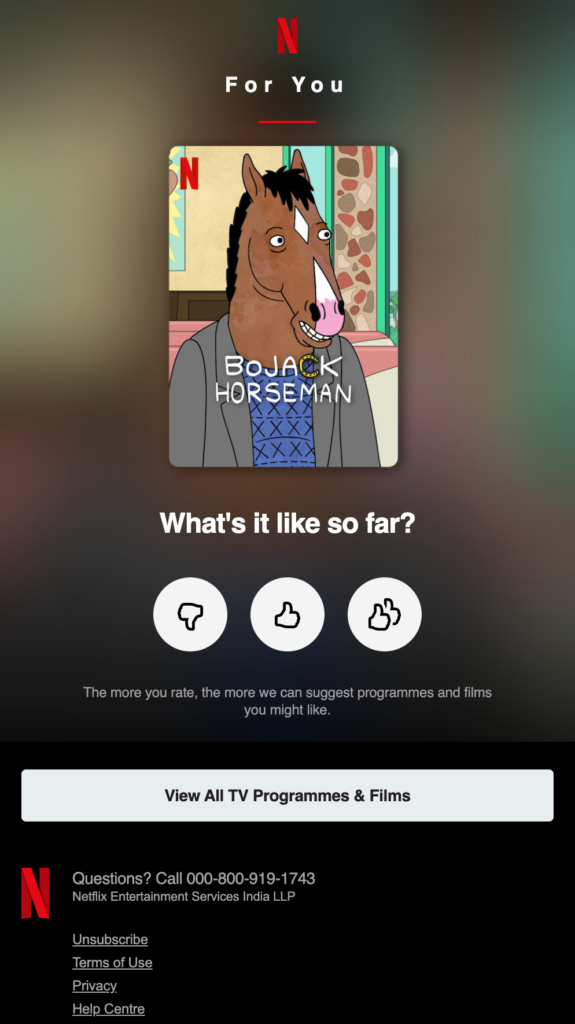
But most importantly, remember that not all churn is created equal. Losing a high-value customer—someone who spends significantly more than the average—is a VIP you want to prioritize in your win-back efforts.
Why?
Let’s find out.
8 Effective Win-Back Strategies For Lost Customers
Customers leave. It happens. But it doesn't have to be a permanent goodbye.
Instead of accepting defeat, savvy businesses see churn as an opportunity—a chance to re-engage, rebuild, and ultimately, recover lost revenue. According to Invesp, email marketing dominates digital marketing strategies for customer retention at 56%.
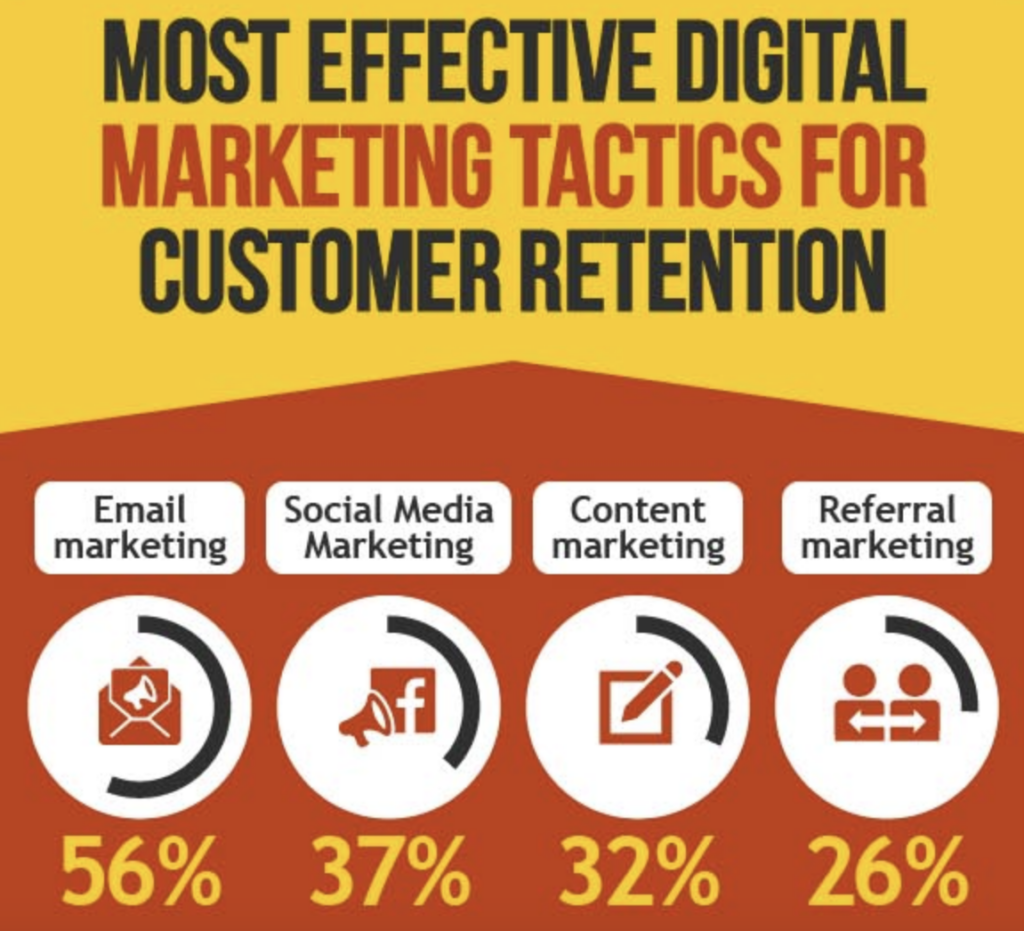
We've analyzed the data, consulted the experts, and compiled proven customer win-back strategies to help you transform customer churn into a comeback story.
1. Focus on Your High-Value Customers First
You need to reward loyal customers—who may at present be former customers—to strengthen future customer relationships.
Smile.io's data shows that the top 10% of customers spend twice as much per order, and the top 1% spend 2.5 times more.
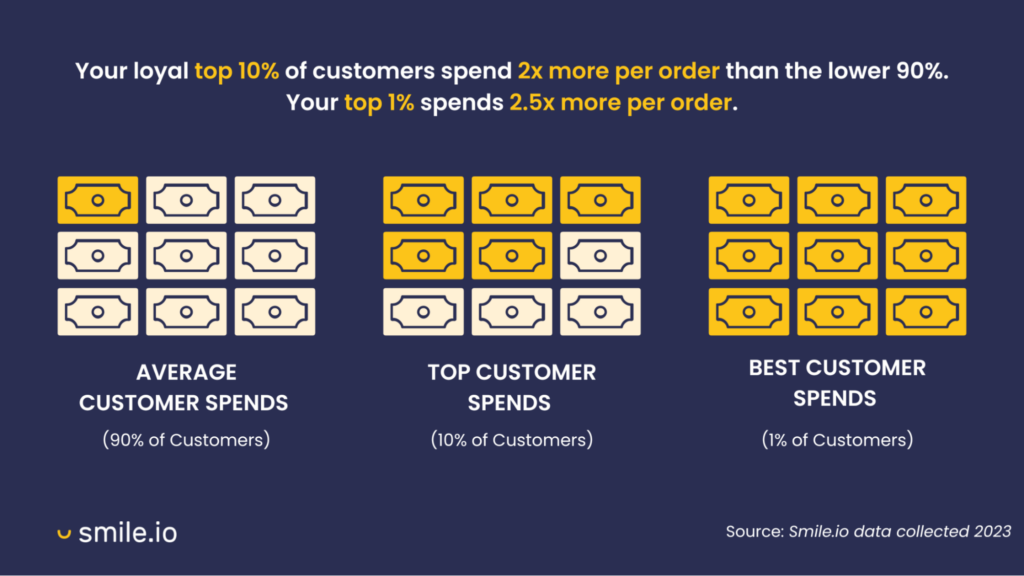
This means that for every high-value customer lost, your business is losing the financial equivalent of almost three customers.
First, here’s how you identify your high-value customers:
- Purchase history: Look for customers who consistently made large purchases or frequently bought from you.
- Lifetime value: Calculate the total revenue generated by each customer over their relationship with your business. Those with high CLTV are your VIPs.
- Customer engagement level: Customers who were highly active on your website, app, or social media channels are likely to be more valuable.
- Customer feedback and product reviews: Positive reviews and enthusiastic feedback can indicate a high-value customer who is also a potential brand advocate.
👉🏼 Real-Life Story: American Airlines
After posting a $149 million loss in the third quarter of 2024, they knew they had to win back their valuable corporate business travellers.
But instead of just offering a generic discount, they revamped their Corporate Experience program with perks specifically designed to appeal to their high-value frequent flyers: priority seating, expedited rebooking, and other priority privileges.
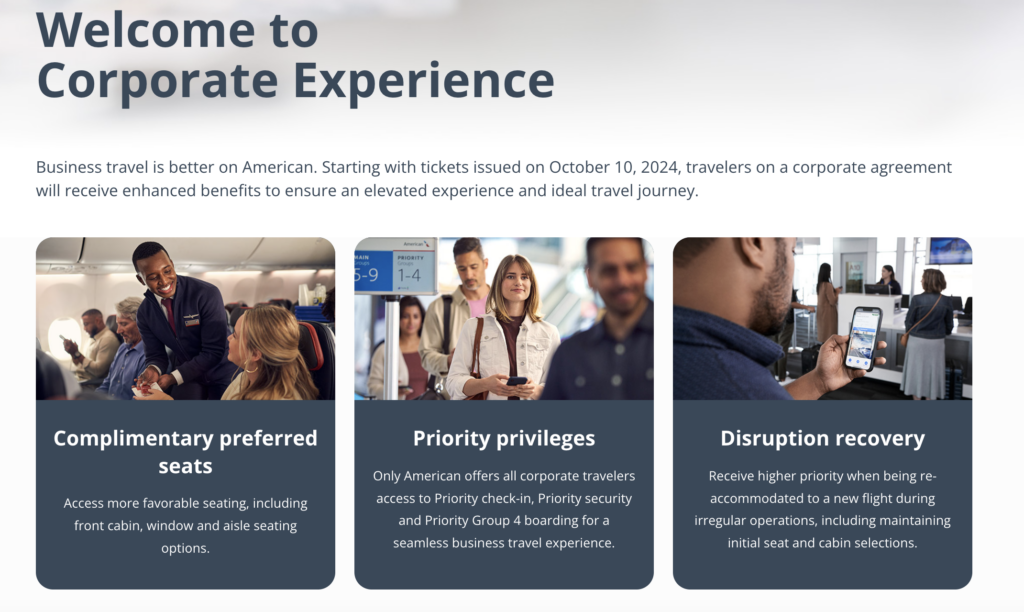
The results of this pivot are yet to be seen, but the first rounds of review seem to be positive.
RFM stands for Recency, Frequency, and Monetary value.
By analyzing these three factors, you can identify which customers are most likely to respond to your win-back campaigns.
- Recency (R): How recently did the customer make a purchase? Customers who have purchased recently are more likely to be engaged with your brand and receptive to your efforts.
- Frequency (F): How often did the customer make purchases? Frequent purchasers are your loyal fans and are more likely to return.
- Monetary value (M): How much did the customer spend on average? High-value customers are worth pursuing, as their return can significantly impact your revenue.
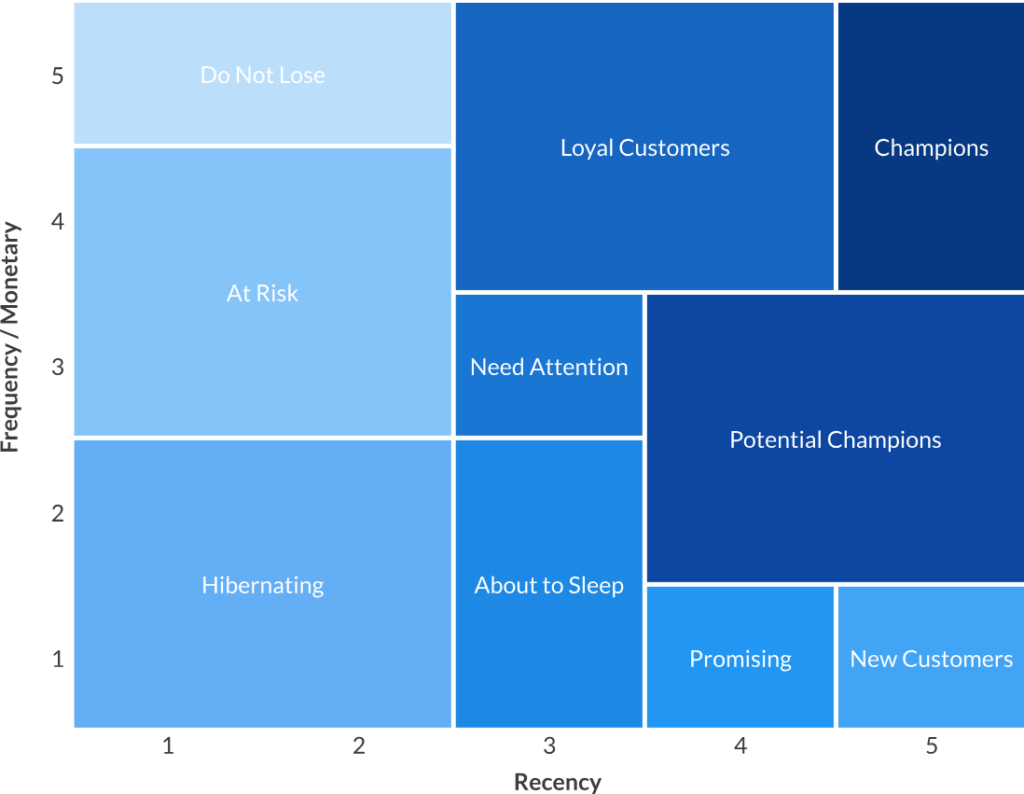
For example, a customer who made a large purchase recently (high Recency), buys from you every month (high Frequency), and spends well above average (high Monetary value) is a prime candidate for your win-back efforts.
2. Optimize Your Email Campaigns
You could have inactive customers waiting to hear from you about new product launches or special offers, but if your win-back marketing efforts never reach their inbox—or worse—land in their spam folders—you’re losing money. And your credibility with internet service providers (ISPs).
For Victoria Shnaider, Chief Operating Officer and Managing Director at KidsVIP, a high email deliverability rate hinges on five key elements:
- A double opt-in for your email list: Make sure they really want to hear from you before you send out blasts. For example, send a confirmation email with a link to click.
- Segment your audience: Group subscribers by interests or purchase history (e.g., send dog owners emails about dog products, not cat toys).
- Regularly clean your email list to remove subscribers who haven't been active for a long time: Again, you have to define the benchmark for dormancy for your business.
- Make sure the content of your emails is relevant and personalized: Use their name and send them offers based on their past purchases or browsing histories.
- Vet the content so that it adheres to the CAN-SPAM Act: This ensures compliance with email marketing regulations. For example, include an unsubscribe link in every email and avoid misleading subject lines (e.g., don't use subject lines like "You Won!" if they haven't actually won anything).
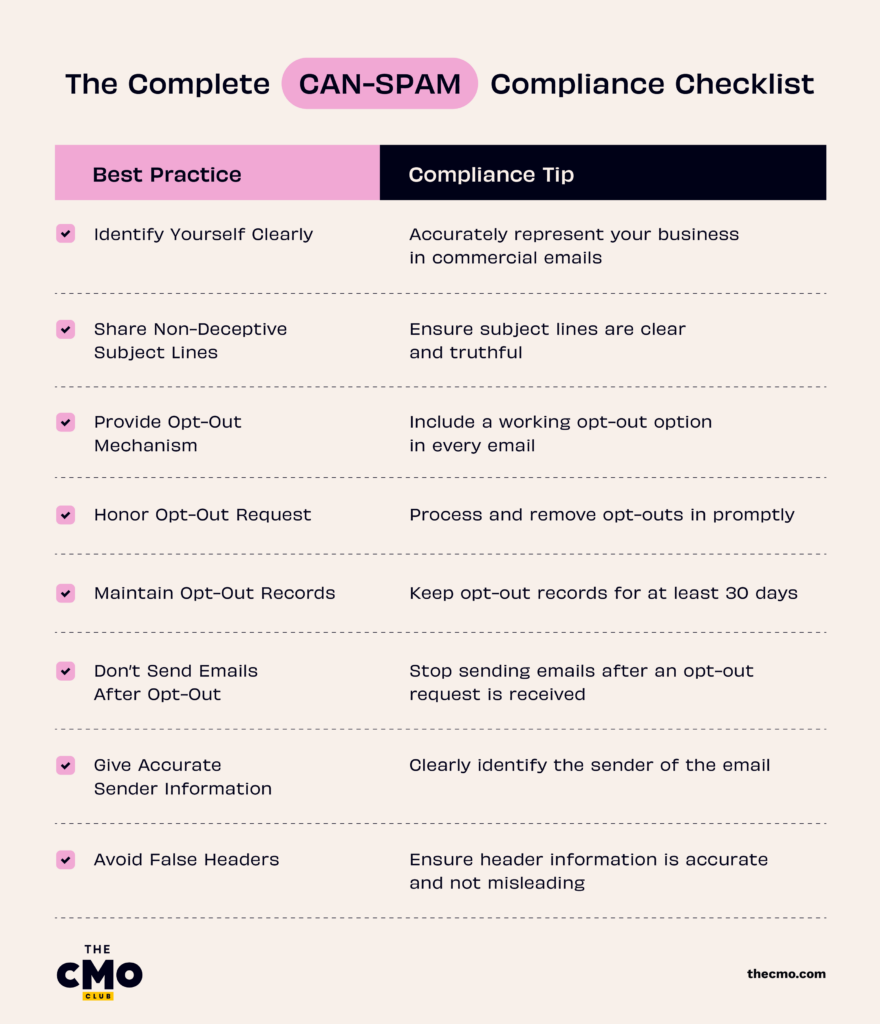
3. Offer Excellent Customer Service
A proactive customer service marketing strategy is more about becoming fireproof rather than retroactively putting out fires.
The first step in rebuilding trust is acknowledging past mistakes. If a customer churned because of a specific issue, address it directly. Explain what went wrong, apologize sincerely, and outline the steps you've taken to prevent similar issues from happening again.
Don't just talk about improvements; show them. Highlight any updates, new features, or enhancements you've made to your product, service, or customer support processes. This shows that you're actively listening to customer feedback and are committed to providing a better experience.
Wordtune won my subscription by offering timely updates on my request, communicating proactively, and resolving the matter in a couple of days:

Tips for transparent communication and follow-ups:
- Be proactive: Don't wait for customers to reach out to you. Proactively communicate any updates, changes, or potential issues that might affect their experience.
- Be honest and transparent: If there's a problem, admit it. Don't hide or downplay issues. Honesty builds trust.
- Follow up: After resolving an issue or responding to a complaint, follow up with the customer to make sure they're satisfied. This shows that you're committed to their long-term happiness.
- Personalize your communication: Use the customer's name and reference their specific situation to show that you're paying attention.
- Offer multiple channels for communication: Give customers the option to contact you through their preferred channel, whether it's email, phone, chat, or social media.
Here’s a great example of a “price correction” email by Glisten Cosmetics from my inbox:

4. Offer Incentives and Promotions
Let's be honest, everyone loves a good deal. A well-executed discount strategy and customer loyalty programs can be powerful tools for winning back lost customers.
To be effective, your offers—whether discounts or programs—need to be:
- Relevant: Align the incentive with the customer's interests and past behavior. If they previously purchased hiking boots, offer a discount on outdoor gear, not gardening supplies.
- Valuable: The incentive should be enticing enough to motivate the customer to return. A 5% discount coupon might not be enough, but a 20% discount or free shipping could do the trick.
- Time-sensitive: Create a sense of urgency with limited-time offers. This encourages customers to act quickly and not miss out on the deal.
Here’s how Joseph Passalacqua, owner and CEO at Maid Sailors, increased their booking frequency by 39% through a tiered loyalty program:
“Our referral program is integrated into email campaigns. It generates 3x more revenue than regular promotional emails. We've also created a tiered loyalty program. Customers earn points toward premium services.”
5. Run Personalized and Dynamic Retargeting Ads on Social Media
Remember that feeling of seeing an ad for something you were just looking at online? That's retargeting in action, and it can be surprisingly effective in winning back lost customers.
Say a customer is browsing your site, maybe even adding items to their cart, but then their doorbell rings, or their dog paws at them and they get distracted and leave.
Retargeting ads act like a gentle reminder, popping up on their social media feeds with a personalized message like, "Hey, remember that awesome thing you were looking at? It's still here, waiting for you!"
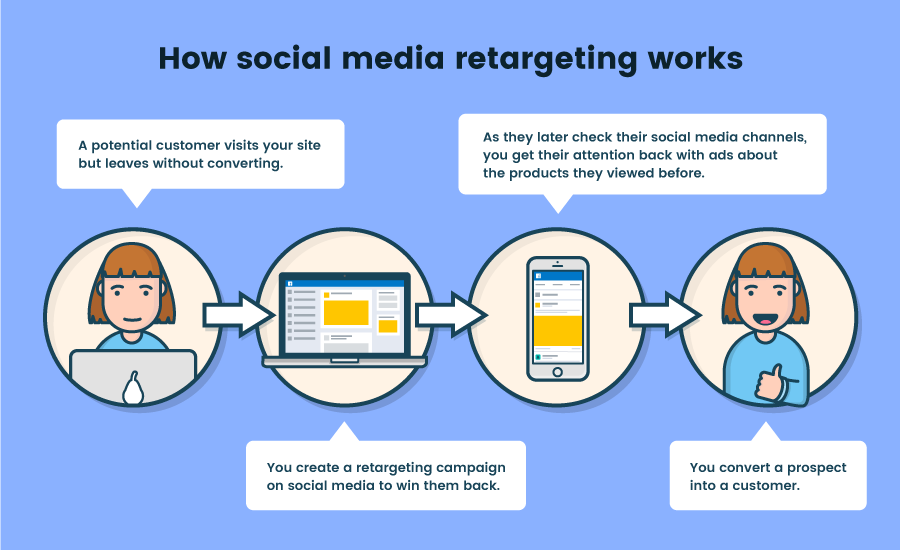
And dynamic retargeting ads take personalization to the next level. These ads automatically populate with products or content that the customer has previously interacted with on your website or app.
This isn't just a hypothetical scenario.
Paul DeMott, Chief Technology Officer at Helium SEO, shared how they use this exact strategy:
“We use retargeting ads to engage customers who have interacted with our site but haven't converted. For example, we set up dynamic ads through Google and Meta that showcase custom content like case studies or our free audit tool, depending on the user's prior actions. This personalization strategy increased our conversion rate from retargeting ads by 28% last quarter.”
Here’s a re-targeted ad that followed me from Doft’s brand website to Facebook like a ghost of Christmas present:
6. Implement a Proactive Customer Retention Program
Why wait for customers to drift away before you realize they're unhappy?
A proactive retention program is like building a moat around your customer base, protecting them from the siren song of your competitors and the allure of "greener pastures."
“Increasing the ROI of our email campaigns comes down to continuously refining our strategy,” says Ryan Kelly, Chief Marketing Officer at Easy Ice.
“One proven strategy is a proactive retention program where we send personalized reminders about contract renewals and maintenance schedules. This approach not only reduces churn but also strengthens customer loyalty.”
7. Use Email Automation to Run Win-Back Email Campaigns
Automated win-back emails can reach a large audience with personalized messages and targeted offers, all while you focus on other key tasks.
Here’s a real-life example of a successful win-back campaign:
“Win-back email campaigns re-engage dormant customers through a sequence of personalized messages, incentives, and urgency-driven CTAs.
We use a three-part email sequence featuring:
- Discounts,
- Product recommendations; and
- Urgency messaging.
These reactivate inactive customers, and we have a measurable 15:1 ROI with this strategy.
The key to success lies in using behavioral data to personalize messaging, aligning content across platforms, and maintaining brand consistency.”—Dan Ben-Nun, Founder and CEO, Adspace
Top Automation Tools for Winning Back Lost Customers
There are tons of email marketing platforms with powerful features for getting customers back. Here’s our list of fan favorites:
8. Use Social Proof To Your Advantage
Humans are inherently social. We constantly look to others for guidance, especially when making decisions. This is where social proof becomes incredibly powerful.
Showcase positive experiences. Share feedback from other customers. Build trust and credibility. Encourage those lost customers to give your brand another chance.
"Understanding customer departure is crucial," Clayton Johnson TCM, owner of Twin City Marketing.
He continues, "We address this by utilizing retargeting ads and win-back emails. For instance, after identifying segments of lapsed customers, we launched personalized win-back emails highlighting case study successes, which led to a 30% customer return rate."
Impressive, right?
"This approach underscores the power of using past successes to re-engage clients effectively."
Johnson's approach highlights a key element of social proof: demonstrating tangible value. Showcasing past successes provides evidence of your expertise. It illustrates the positive impact you've had on others.
Talking about your achievements shows what you're good at and how you've helped others.
How to Measure the Success of Your Customer Win-Back Campaigns
Okay, you've sent those win-back emails out into the world. Fingers crossed! But don't just sit there twiddling your thumbs.
You have to track those results and keep tweaking things to get the most bang for your buck. Here's the lowdown:
1. Track and Optimize the Right Win Back Metrics
Don't just guess if your campaigns are working—measure that success! Here are the key metrics to keep your eye on:
- Re-engagement rate: This is the percentage of inactive customers who come back to life (make a purchase, renew their subscription, etc.) after you woo them with your win-back magic. A high re-engagement rate means you're doing something right!
- Customer Lifetime Value (CLTV) post-win-back: Are those re-engaged customers sticking around and spending more? Track their CLTV to see the long-term impact of winning them back.
- Campaign ROI: This is the money question! Compare the revenue from your re-engaged customers to how much you spent on the campaign. A high ROI means those win-back efforts are paying off.
- Website traffic and engagement: Are those resurrected customers coming back to your website? Are they hanging out longer and checking out more pages? This data gives you clues about their level of re-engagement.
- Social media engagement: Are people talking about your win-back campaign? Sharing your posts? This can give you a sense of how customers feel and if you've created any brand evangelists.
These metrics will give you a clear picture of how your win-back campaigns are performing and how you can improve them.
2. A/B Test Your Win Back Strategies
A/B testing compares two versions of something—like an email subject line or a special offer—to see which one works better.
Here's how to A/B test your win-back campaign:
- Pick your target: Choose one thing to test at a time. Maybe it's your email subject lines, the discount you're offering, or even the words you use in your emails. Like “Hi!” vs. “Hey!”
- Create two contenders: Cook up two different versions of whatever you're testing. Keep everything else in the campaign exactly the same, so you know what—and if—something is making a difference.
- Split your customers: Divide your audience into two groups and send each group a different version of your campaign.
- Tally the score: Track the important stuff (opens, clicks, conversions) for each version.
- Analyzer: See which version came out on top. Use that winner and then move on to test something else!
Now, no matter how many records you smash with your win-back campaigns, don't assume you've found the perfect formula. Customer preferences change, and your campaigns should too.
Continuous A/B testing is the key to staying ahead of the curve.
Turn Lost Customers into Your Most Profitable Asset
Like that jar of coconut oil warming up in the water, winning back lost customers takes patience, strategy—and the right amount of heat.
Your inactive customers aren't gone forever. They're waiting—perhaps not even consciously—for the right moment to return. That moment is yours to create.
So:
- Focus on high-value customers first—they're worth 2-3x more than average customers.
- Use the RFM (Recency, Frequency, Monetary value) matrix to prioritize your win-back efforts.
- Combine personalized email campaigns, retargeting ads, and proactive customer service.
- Track metrics relentlessly and continuously optimize your approach.
With targeted win-back campaigns, smart segmentation, and the strategies we've explored, you can transform those cold relationships into warm, profitable connections once again.
Ready to grow? Subscribe to The CMO newsletter to stay on top of trends and get the latest tips, resources, and guides from our community of seasoned marketing leaders straight to your inbox!

